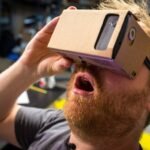VR – A New Approach to Interior Design
Like every other industry, the world of interior design has been revolutionised by technology. Among these advancements, Virtual Reality (VR) stands out as a game-changer, offering a fresh, innovative approach to designing spaces. This article explores how VR is set to reshape the world of interior design.
Understanding Virtual Reality (VR)
Virtual Reality is a technology that creates a simulated environment, immersing the user in a 360-degree view of a different world. With VR, the user can interact with the environment around her, gaining a new level of understanding and experience that was previously impossible.
VR in Interior Design: The New Frontier
The application of VR in interior design is a significant leap from traditional methods. In the past, interior designers relied on physical models and 2D renderings to present their vision. Now, VR allows designers and clients to step into the designed space before it becomes a reality.
Visualizing the Design
One of the key advantages of VR in interior design is visualization. With VR, designers can build a virtual model of a room or a whole house and furnish it with virtual furniture, fixtures, and fittings. Clients can then put on a VR headset and walk around the virtual space, experiencing the design in a far more immersive and realistic way than 2D drawings or even 3D models could provide.
Iterating Designs with Ease
VR also provides a flexible platform for making changes to the design. With a few clicks, the designer can swap out furniture, change colors, or adjust the layout. This not only saves time but also allows for greater creativity and experimentation in the design process.
Enhanced Client Participation
VR can significantly enhance client participation in the design process. It allows clients to virtually walk through their future space and provide feedback. This can lead to more meaningful conversations between the designer and the client, ultimately leading to a design that closely matches the client’s vision.
Case Studies: VR in Action
Several interior design firms have already started to incorporate VR into their design process. Let’s take a look at a few examples.
Decorilla
Decorilla, an online interior design service, provides clients with VR images of their final design. Clients can view these images on their computer or phone, or for a more immersive experience, they can use a VR headset to virtually walk through their newly designed space.
Ikea’s Virtual Reality Kitchen
Ikea has taken the application of VR a step further by developing a VR app that allows customers to explore different kitchen solutions. Users can change the color of cabinets and countertops, view the kitchen from different perspectives, and even virtually cook a meal.
Conclusion: The Future of Interior Design
While VR technology is still relatively new in the field of interior design, its potential is enormous. As the technology continues to develop and become more accessible, we can expect to see even more exciting applications of VR in interior design. From planning and visualizing to modifying designs and enhancing client participation, VR truly represents a new approach to interior design.






